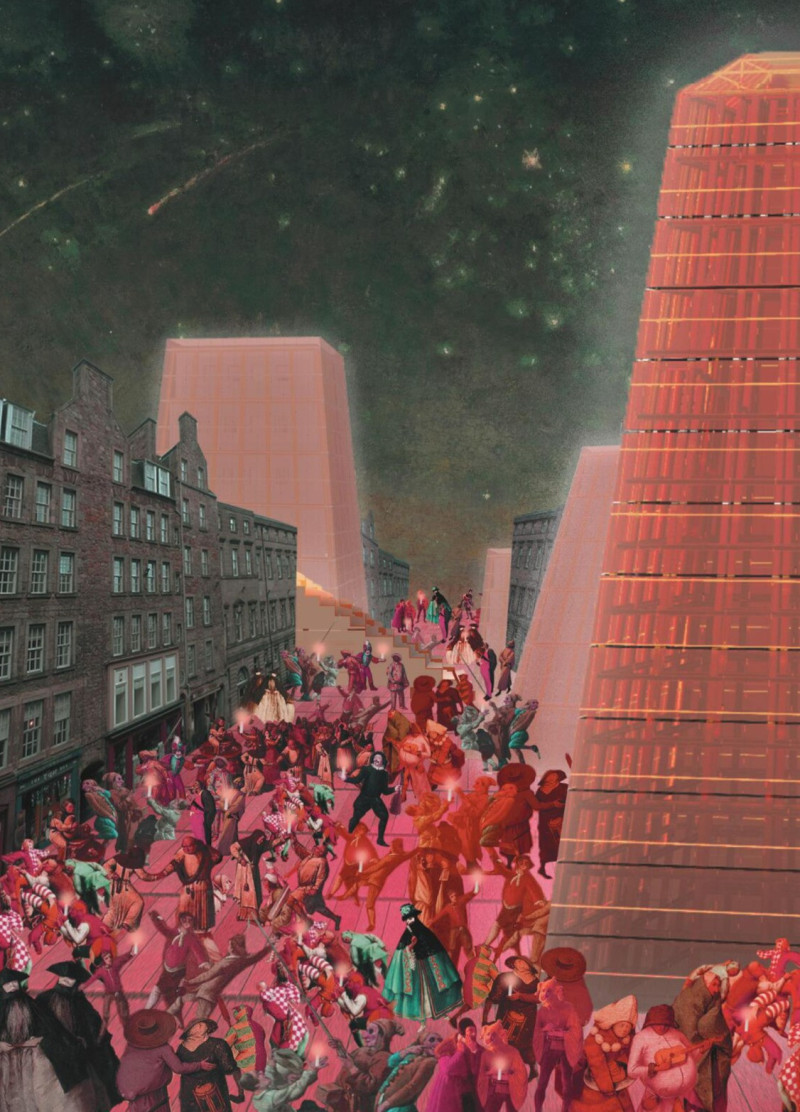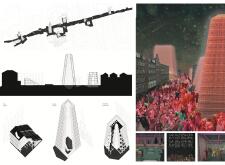5 key facts about this project
The design connects contemporary living with urban life, focusing on how people interact with their environment. Located in a busy city, the building aims to create spaces for both community engagement and personal privacy. The overall concept emphasizes the balance needed to meet individual needs while promoting a sense of belonging within the bustling urban landscape.
Urban Integration
Central to the design is the idea of "City," which captures the essence of urban living. The layout encourages the exploration of relationships between different spaces, addressing the need for both private areas and communal zones. This approach enhances the experience of city life, making it easier for residents to connect with their surroundings and each other in a meaningful way.
Personal and Communal Spaces
The focus on "Closet" highlights the importance of personal spaces within the larger context. It suggests the necessity for areas where individuals can find solace while still being part of the community. This balance between privacy and shared experiences is crucial in city living. The design considers these needs, creating comfortable environments that invite people to both relax and engage.
Functional Design Elements
The reference to "Instrument" points to the practical aspects of the spaces being created. The design does not only prioritize looks but also aims to support the everyday lives of its residents. Each area is crafted to fulfill specific functions, ensuring that the spaces work effectively for all who use them. The intention is to provide environments that are not only pleasant but also helpful and convenient.
Illuminating Experiences
The term "Candle" brings to mind warmth and light. This element emphasizes how important natural light is in creating a welcoming atmosphere. Thoughtful design decisions allow light to fill common areas, making them inviting for gatherings. By focusing on the sensory experience, the building encourages social interactions, fostering a sense of warmth and community among its inhabitants.























